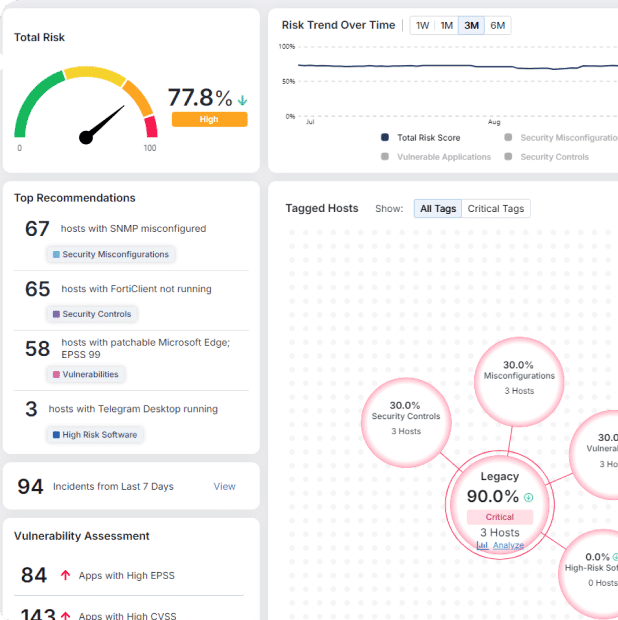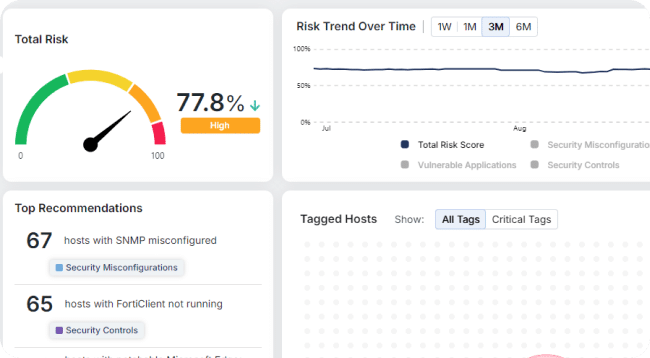Destructive Ransomware is Outpacing Your Recovery Plan

When a ransomware attack strikes, data recovery becomes a race against time.
Yet for many organizations, recovery takes days—sometimes weeks—not because the data is gone, but because restoring it safely and reliably is far more complicated than most realize. And while the cybersecurity conversation has traditionally emphasized detection and response, one truth is becoming clearer with every breach: data recovery is often the single largest cost driver in a cyberattack.
Today’s destructive ransomware variants don’t just encrypt files—they corrupt backups, disable recovery tools, and target operational continuity itself. For CISOs, that puts unprecedented pressure on recovery speed, data integrity, and forensic readiness. And unfortunately, traditional approaches to data recovery weren’t built for this reality.
It’s time to rethink how we recover from attacks. It’s time to make recovery preemptive.
The High Cost of Recovery Downtime
According to IBM’s Cost of a Data Breach Report 2024, the average breach costs organizations $4.45 million, with ransomware attacks climbing even higher—$5.13 million on average—not including ransom payments. A major reason? The length and complexity of recovery.
Ransomware attacks currently cause an average of 24 days of downtime, driven largely by the challenges of recovering clean, uncorrupted data. Whether through backup restoration, manual system rebuilds, or forensic imaging, recovery is slow, high-risk, and labor-intensive.
In many incidents, organizations discover too late that:
- Backups were encrypted or deleted
- Critical systems weren’t fully covered
- Recovery processes were never tested
- Malware persistence mechanisms reinfect restored environments
The result? Downtime drags on, costs skyrocket, and business operations grind to a halt—all while regulatory deadlines and reputational fallout loom large.
6 Reasons Why Recovery Takes So Long
Most IT and security leaders have backup systems in place. So why does recovery still fail to meet business needs?
- Backups are incomplete or compromised — Modern ransomware often targets backups early in the attack chain. If backups were online, connected to the network, or lacked air-gapped protection, they’re likely encrypted or erased—rendering them useless when most needed.
- Systems must be rebuilt before recovery — You can’t restore data to an infected or potentially compromised system. That means wiping machines, reinstalling software, reconfiguring policies, and validating systems before any recovery begins.
- Chain of custody and forensics create delays — To comply with legal, regulatory, or insurance requirements, impacted systems must be preserved for forensic investigation before any modifications can occur. This is essential, but it introduces time-consuming delays.
- Data integrity must be verified — No one wants to reintroduce malware into a clean network. Every restored file and system must be validated and scanned, further prolonging the process.
- Recovery dependencies are complex — In modern IT environments, restoring one server doesn’t bring a business function back online. Recovery requires orchestration across interconnected applications, databases, and authentication systems.
- Recovery is still mostly manual —Despite advancements in backup and DR solutions, many recovery tasks—especially under pressure—still rely on ad-hoc scripting, manual verification, and tribal knowledge. Recovery isn’t just technical. It’s operational, and it often reveals the absence of preparedness.
Traditional Methods Aren’t Enough
Legacy backup and disaster recovery tools were designed for accidental loss, not targeted destruction. They offer recovery points, but not fast, clean, forensically sound restoration in the middle of a live incident.
They don’t protect against malware that corrupts recovery environments, the deliberate encryption of cloud and offline backups, complex recovery dependencies that span hybrid infrastructure, or compliance obligations that require preserving evidence during the restoration process.
In short, traditional methods don’t align with today’s ransomware threat model. And the cost of relying on them is increasing.
Morphisec Adaptive Recovery: Designed for Today’s Threats
Morphisec’s Adaptive Recovery capabilities are built to eliminate the downtime, complexity, and risk that hold back traditional recovery strategies. These capabilities bring speed, integrity, and forensic readiness to the forefront—helping organizations recover faster, safer, and smarter.
At the core of Adaptive Recovery is Data Recovery—a novel approach that preserves real-time snapshots of clean, unencrypted files in protected, tamper-proof caches. In the event of an attack, these files can be recovered instantly, even if the original copies are encrypted by ransomware.
Key capabilities include:
- Real-Time File Restoration — Automatically restores encrypted or deleted files from a clean cache with no need to wait on slow or compromised backups.
- Tamper-Proof Recovery Cache — Protected from threat actors and malware, ensuring recovery points remain viable even during sophisticated attacks.
- File-Level Precision — Recovers only what’s needed, when it’s needed, thereby reducing time, complexity, and risk during restoration.
- Forensic Preservation — Works alongside Morphisec Forensic Recovery to maintain chain-of-custody for incident investigation and compliance reporting.
This approach shrinks recovery times from days or weeks to minutes, enabling organizations to bounce back before reputational or financial damage escalates.
Preemptive Recovery = Ransomware Resilience
Adaptive Recovery is part of Morphisec’s broader Anti-Ransomware Assurance Suite, which combines:
- Infiltration protection to block initial access attempts.
- Impact protection to stop file encryption and data theft.
- Adaptive exposure management to reduce the attack surface.
- Data and forensic recovery to ensure fast, compliant restoration.
- Ransomware-Free Guarantee — A performance-backed commitment that Morphisec will stop ransomware in your protected environment.
Together, these capabilities deliver a preemptive cyber defense posture—stopping ransomware before it executes and enabling recovery that meets the speed and scrutiny of today’s business and regulatory environment.
Speed Time to Recovery, Minimize Damage
Ransomware is no longer just about ransom—it’s about disruption, destruction, and delay. And the longer recovery takes, the more those impacts compound.
For CISOs, this means one thing: The ability to recover clean data, quickly and confidently, is now a board-level imperative. It’s the difference between continuity and collapse.
With Morphisec’s Adaptive Recovery capabilities, you gain a modern, attack-aware recovery strategy that doesn’t just support your business—it protects it. Learn more about how Morphisec’s Data Recovery capabilities enable ransomware resilience and see it in action — schedule a demo today.
Stay up-to-date
Get the latest resources, news, and threat research delivered to your inbox.





















